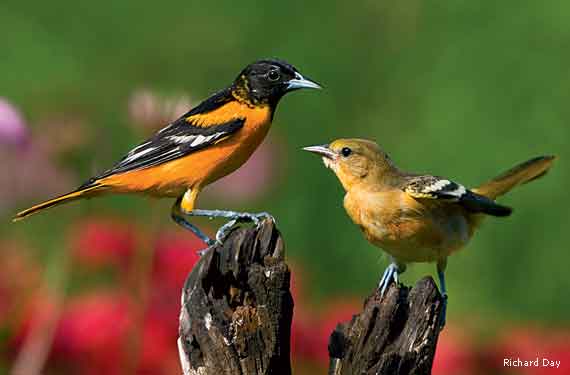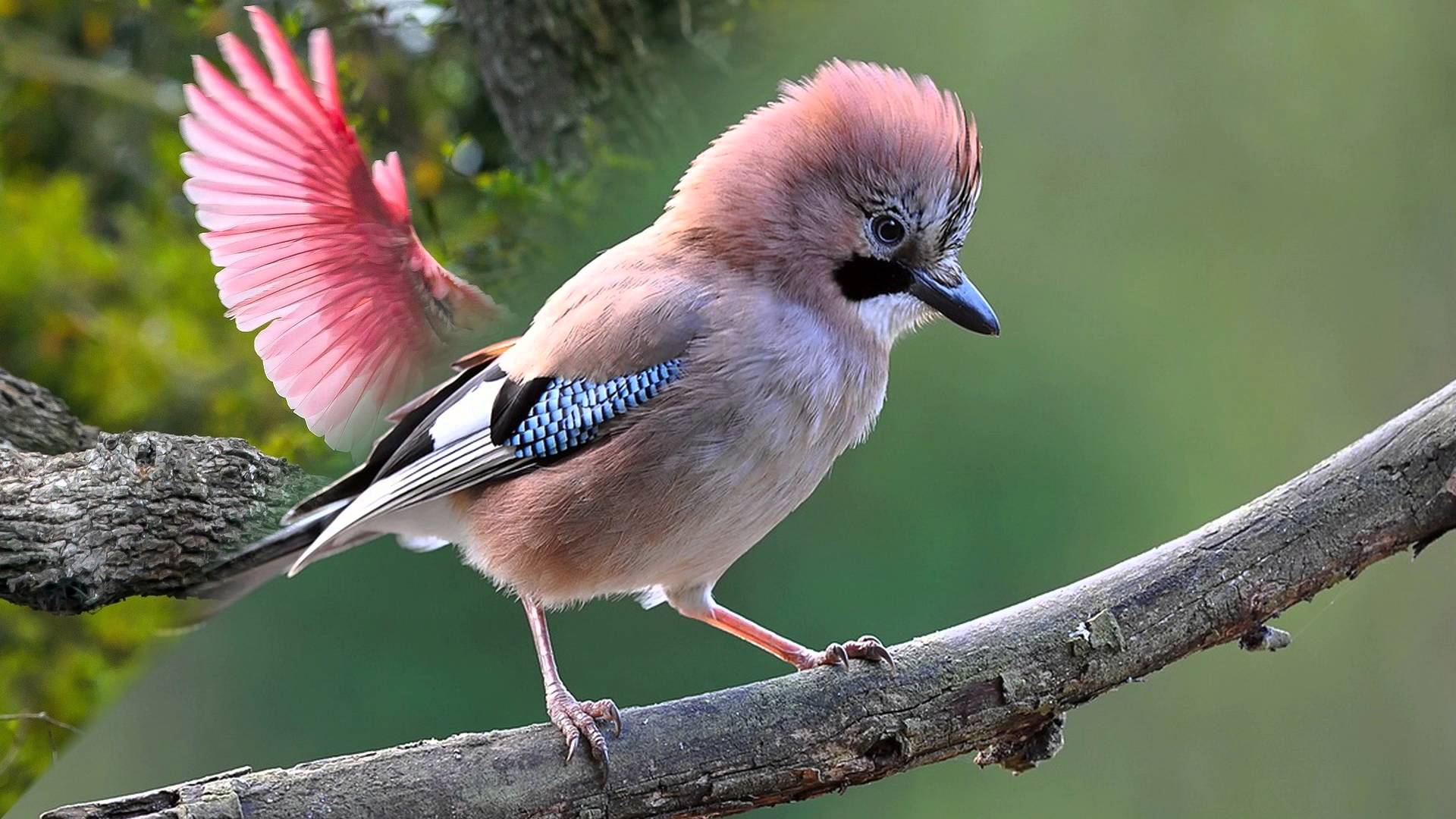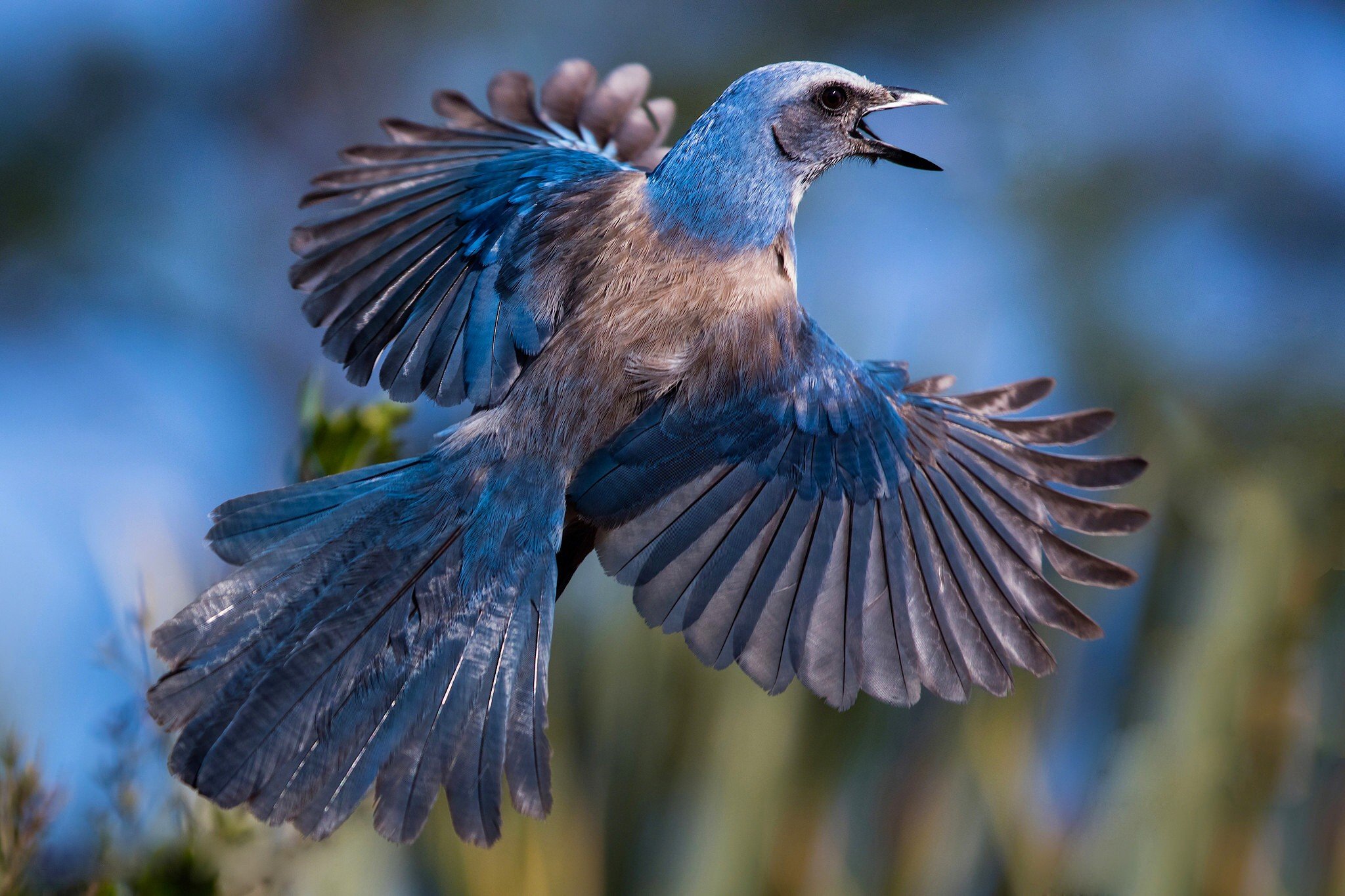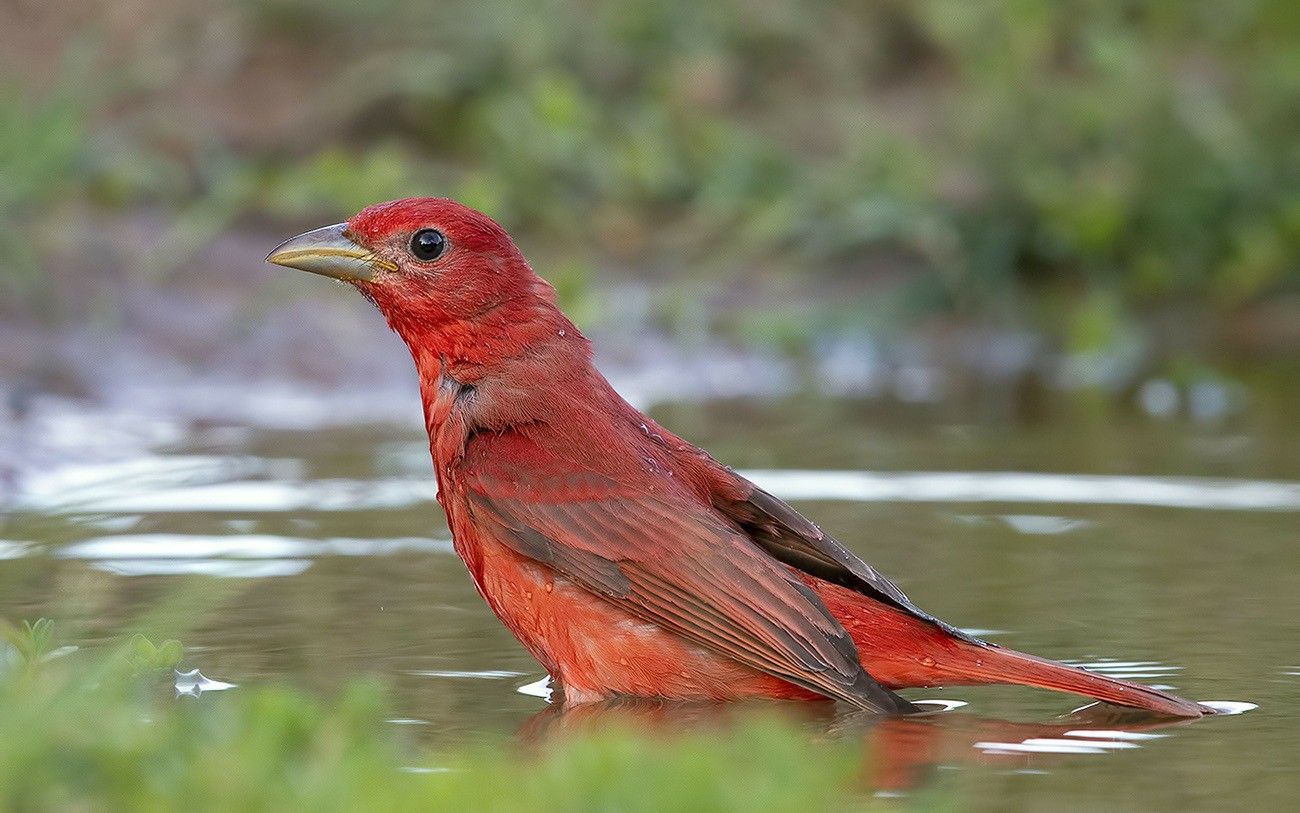
HAVE YOU EVER WANTED TO TAKE PHOTOS like those that appear in National Wildlife and other nature magazines? Your backyard is a great place to get started, especially if you’re interested in birds. High-quality bird photography requires good equipment, skill, patience, some knowledge of avian natural history and many long hours of practice. But by following these basic tips, you can be well on your way. An added benefit: As an extension of bird-watching, photographing birds in your yard provides another way to enjoy your wildlife habitat.
• Choose the right equipment. The best camera for bird photography is a DSLR (digital single-lens reflex) body with interchangeable lenses. A telephoto lens, such as an 80-to-200mm zoom or 100-to-300mm zoom, should work when you’re starting out. (If you get serious about bird photography, you can invest in larger telephoto lenses later.) Several less-expensive, point-and-shoot cameras with powerful optical-zoom lenses are also available. Whatever camera you choose, make sure to purchase a tripod to prevent camera movement for sharp, in-focus images.

• Use a photo blind. The birds in your backyard may be used to you, but you’ll get better pictures if they can’t see you when you’re photographing them. A blind can be anything from a curtain in an open window to an elaborate structure produced specifically for wildlife photography. You’ll find an assortment of blinds for sale in outdoor or hunting stores. If possible, set up the blind in the store and pay attention to how the ports open to see if they’re the right height for your tripod and whether your equipment will fit properly. Some pros make their own blinds using a plumbing-pipe frame covered with fabric sewn to fit. Whatever blind you go with, it helps to put it out a day or two before you start to take photos so the birds can get used to it. If birds don’t return to the area within 30 minutes after you arrive, move farther away.

• Take advantage of feeders and birdbaths. The easiest way to get birds near your blind is to photograph them where they’re accustomed to going: feeders and water features. Select a spot where the sun is behind you, with an uncluttered background, or near a window if a curtain is what you plan to use as a blind. Position feeders so they’re level with the height of your lens to avoid shooting up or down at the birds. When using a telephoto lens, you’ll have less depth of field (the part of a photo that’s in focus) than in wide-angle scenery shots, so objects behind the bird will be out of focus. Placing feeders near evergreen shrubs or trees will create a more natural-looking background than a house or driveway. Practice photographing birds on feeders and in birdbaths until you master proper exposure and can focus quickly on small, moving subjects.
• Experiment with more natural settings. Look around your yard for blooming bushes or evergreen trees where birds can perch. Move your feeders close to those plants and wait for the birds to sit on limbs for photographs. If you’re shooting woodpeckers, try pressing suet in holes in logs. Another option is to place perches made of branches or other natural material near your feeders and water features. Many birds use perches when flying to and from feeders and baths. Chickadees, titmice and woodpeckers, for example, take seeds to perches to eat them, and many bird species preen on branches after bathing. Knowing some bird behavior will help you to anticipate the animals’ movements so you’re ready when they land. The best times of day to take photos are early morning and late afternoon when the light is not as harsh and birds are most active.

• Focus on focus. If you can spot birds with your binoculars, you’ll have a jump-start on finding them in your camera’s viewfinder. Because we subconsciously make eye contact with wildlife, even in photos, the bird’s eye should be in focus. Prefocus your lens on the branch or feeder so you’ll be ready when a bird lands. Then fine-tune your focus on the animal’s eye. Because birds are always moving, you need to be quick and prepared. It helps to set your shutter speed at a minimum of 250th of a second. Master the operation of your camera so you don’t fumble when photographing a tiny, flighty bird; you rarely will get a second chance.
• Pay attention to composition. Shoot a variety of poses by placing the bird in different sections of your viewfinder. Some subjects, such as a woodpecker on a snag, are naturally vertical shots, while a cardinal on a dogwood branch looks better horizontal. When making images of birds on branches or in trees, avoid putting the animal in the center of the frame. Be creative and place a bird in the lower third or upper third, left or right. Try and compose your photo with the bird looking into, rather than out of, the picture. Look around the edge of your viewfinder to make sure you’re not cutting off any tails or feet and check for distracting items such as poles, buildings or lawn furniture in the background. Use a zoom lens to compose a diversity of shots, both close-ups and photos showing a bird’s behavior and habitat.
Finally, have fun! Backyard photography offers a great way to get outside and enjoy your habitat’s resident birds. And because you’re there, paying attention, you may see behaviors you normally would miss—and have a chance to capture them with a camera to enjoy later and share with others.
Welcome WildlifeLike Susan and Richard Day, whose property is an NWF certified habitat, you can attract and nurture native wildlife at home by participating in the Federation’s Garden for Wildlife™ program.
Illinois-based writer and photographer Susan Day specializes in backyard habitats. She and her husband, Richard Day, own Daybreak Imagery and take many of their photos on their 63-acre property.





